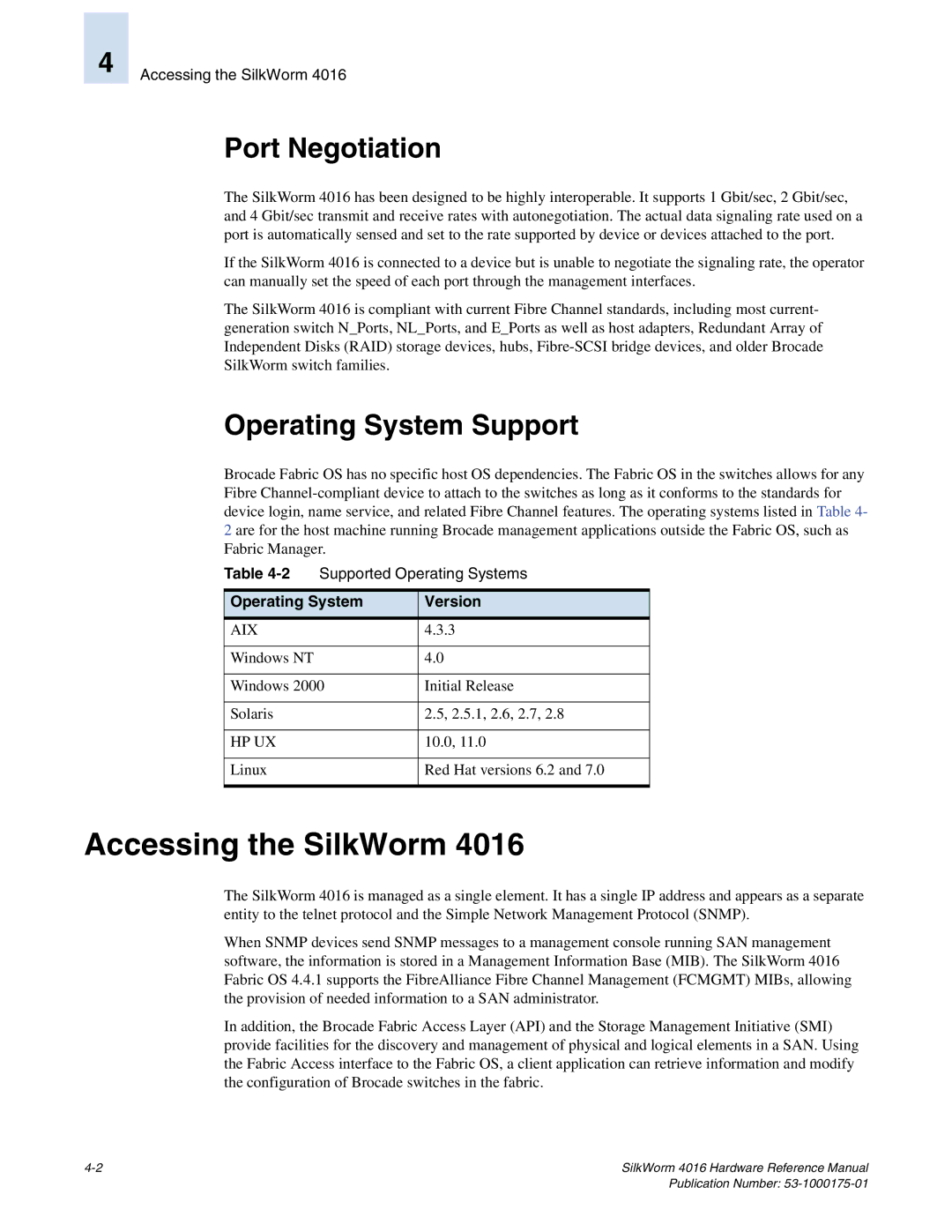4
Accessing the SilkWorm 4016
Port Negotiation
The SilkWorm 4016 has been designed to be highly interoperable. It supports 1 Gbit/sec, 2 Gbit/sec, and 4 Gbit/sec transmit and receive rates with autonegotiation. The actual data signaling rate used on a port is automatically sensed and set to the rate supported by device or devices attached to the port.
If the SilkWorm 4016 is connected to a device but is unable to negotiate the signaling rate, the operator can manually set the speed of each port through the management interfaces.
The SilkWorm 4016 is compliant with current Fibre Channel standards, including most current- generation switch N_Ports, NL_Ports, and E_Ports as well as host adapters, Redundant Array of Independent Disks (RAID) storage devices, hubs,
Operating System Support
Brocade Fabric OS has no specific host OS dependencies. The Fabric OS in the switches allows for any Fibre
Table | Supported Operating Systems | |
|
| |
Operating System | Version | |
|
|
|
AIX |
| 4.3.3 |
|
|
|
Windows NT |
| 4.0 |
|
| |
Windows 2000 | Initial Release | |
|
|
|
Solaris |
| 2.5, 2.5.1, 2.6, 2.7, 2.8 |
|
|
|
HP UX |
| 10.0, 11.0 |
|
|
|
Linux |
| Red Hat versions 6.2 and 7.0 |
|
|
|
Accessing the SilkWorm 4016
The SilkWorm 4016 is managed as a single element. It has a single IP address and appears as a separate entity to the telnet protocol and the Simple Network Management Protocol (SNMP).
When SNMP devices send SNMP messages to a management console running SAN management software, the information is stored in a Management Information Base (MIB). The SilkWorm 4016 Fabric OS 4.4.1 supports the FibreAlliance Fibre Channel Management (FCMGMT) MIBs, allowing the provision of needed information to a SAN administrator.
In addition, the Brocade Fabric Access Layer (API) and the Storage Management Initiative (SMI) provide facilities for the discovery and management of physical and logical elements in a SAN. Using the Fabric Access interface to the Fabric OS, a client application can retrieve information and modify the configuration of Brocade switches in the fabric.
SilkWorm 4016 Hardware Reference Manual |
